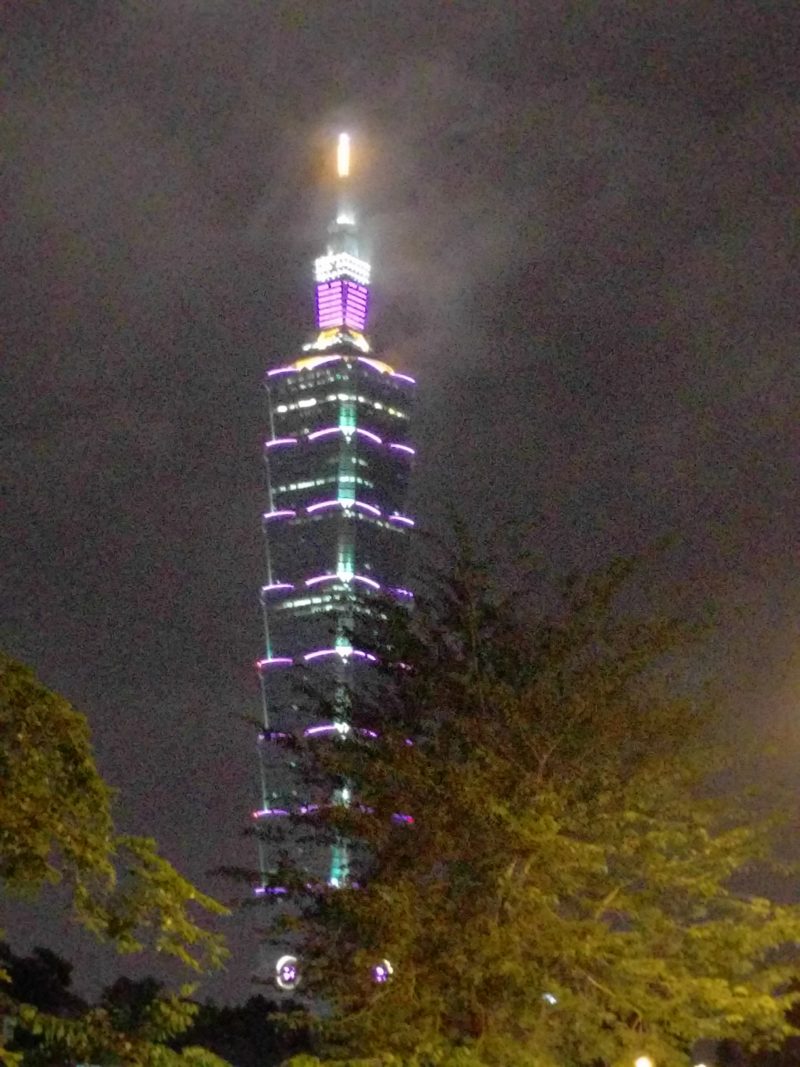Recently, I experienced an earthquake during my trip to Taiwan. I am not sure but I think this was the first one for me. As it happened, you could feel a little back and forth movement. It lasted for a few seconds and then it was gone. While it caused some excitement (and concern) from us visitors, our Taiwanese colleagues shrugged and one of them even made a comment that this was our welcome to Taiwan.
Inevitably, the conversation in the next break veered to this topic and we discussed the Taipei 101 building and the measures it incorporates in dealing with the earthquakes. The answer turned out to be a 730 ton ball that is suspended from one of the top floors. They use the ball to dampen the effects of the seismic activity, of which, there is plenty of as the building sits only 600 feet from a fault line. Thus, if an earthquake moves the building one way, the suspended ball tries to stay in its position because of inertia and this dampens the overall movement of the building by as much as 40%. I think of it as the Yin to the earthquake’s (or wind’s) Yang. One of my colleagues told me the ball was observed to move as much as 1.5 meters (about 5 feet) in one such recent occurrence. See this page to learn about this in some detail. The animation towards the bottom shows how this works really well.
On my long flight back, my mind went back to this subject and how it could pertain to modern supply chains. There is no shortage of shocks in modern supply chains. Sometimes it is mild, in the form of a slightly higher demand, and at other times it is more severe, by way of a total breakdown. So, what do we do to absorb this shock in the system? Well, traditionally, we have relied on placing shock absorbers in the system at various points. In a supply chain context, the shock absorbers can take the following forms:
- Safety or Buffer Stocks or inventory
- Safety or Extra capacity
- Swap agreements with competitors
- Expedited shipping modes such as air shipments
- Extra time
- Etc.
 Of all these, inventory is probably the one that comes into play the most often. As conditions change, it acts as the primary shock absorber within the supply chain. Absent the appropriately placed inventory, a supply chain would feel every bump in the road, every tremor between its links if you will.
Of all these, inventory is probably the one that comes into play the most often. As conditions change, it acts as the primary shock absorber within the supply chain. Absent the appropriately placed inventory, a supply chain would feel every bump in the road, every tremor between its links if you will.
In more modern times, there has been a trend towards minimizing some of these dampeners. Through the advances in technology, it has become possible to replace parts of these buffers with information. In fact, one could argue that information might be the biggest buffer that exists in most supply chains today.
As technology has enabled the use of information as the buffer, there has been a trend to also minimize the overall need for these buffers. Technology, by nature tends to provide precise information. This precision can lead us to lower our guard in terms of preparing for uncertainty. When the unpredictable happens and things go wrong, we might be caught underprepared to deal with it. As an example, look at the case of the construction of Empire state building: The building was completed 12 days ahead of schedule in under 410 days! That is just over about 14 months with 1931 technology! By contrast, Taipei 101 took 5 years to complete. And while I am sure credit goes to the workers and engineers on the job (as I am sure to plain old luck), the planners must have done a good job of creating contingencies in the plan to deal with the unpredictable. How many modern construction projects can claim such on-time performance? On the other hand, with modern technology, I am also pretty sure that all modern project plans are more precise compared to the one for the Empire State building.
I wonder if the precision of today’s information systems create a sense of overconfidence in today’s supply chains. I do not have empirical data, but my experience seems to suggest there is a tendency to confuse precision of calculations with the accuracy of predictions. As a net result, I have seen an unwillingness to plan for the underlying uncertainty in the future.
What do you think? How do you deal with the uncertainty in your supply chain? How do you dampen the shocks? Please share.
Like this blog? Please share with colleagues and also follow us on LinkedIn or Twitter and we will send you notifications on all future blogs.






